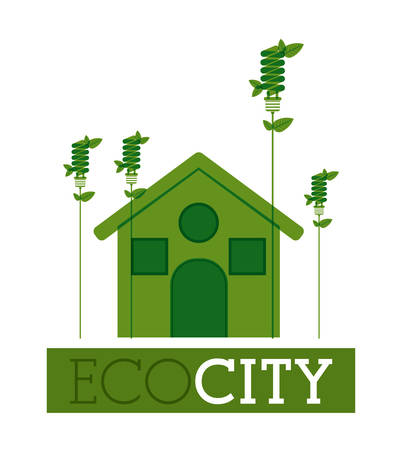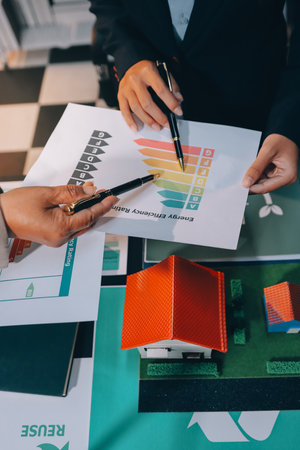Introduction to Green Building Certification in India
India, with its rich cultural heritage and dynamic urban growth, is witnessing a paradigm shift towards sustainable development. Green building certification plays a pivotal role in ensuring that construction projects minimize their environmental impact while promoting occupant well-being. The landscape of green certification in India is shaped by prominent systems like IGBC (Indian Green Building Council), GRIHA (Green Rating for Integrated Habitat Assessment), and LEED India. Each framework brings unique benchmarks tailored to the Indian context, emphasising local climate responsiveness, resource efficiency, and traditional wisdom. IGBC standards are widely adopted for their alignment with Indian construction practices and government policies. GRIHA, developed by TERI and supported by the Ministry of New and Renewable Energy, is rooted deeply in indigenous architectural philosophies and addresses the specific challenges faced by Indian cities and rural areas alike. LEED India adapts global best practices to suit regional requirements, focusing on energy savings, water efficiency, and improved indoor environmental quality. Together, these certification systems not only guide sustainable material choices but also foster a culture of ecological responsibility among builders, architects, and communities across India.
Locally Sourced Eco-Friendly Building Materials
For green building certification in India, the selection of building materials is a core element, deeply rooted in both environmental consciousness and cultural sensibilities. Embracing sustainability goes hand-in-hand with honouring the country’s diverse construction traditions. Let us explore how regionally available, eco-friendly materials not only help reduce carbon footprint but also celebrate India’s architectural heritage.
Why Local Matters: Sustainability & Tradition
Using locally sourced materials reduces transportation emissions and supports community economies. More importantly, it preserves traditional construction methods that are climate-responsive and resource-efficient. By integrating indigenous materials, green buildings in India resonate with their context while meeting global sustainability benchmarks.
Key Eco-Friendly Materials in Indian Green Construction
| Material | Description | Sustainability Benefits | Regional Context |
|---|---|---|---|
| Fly Ash Bricks | Bricks made from fly ash, an industrial byproduct | Reduces landfill waste, conserves natural resources, provides thermal insulation | Widely used across urban India; aligns with national waste utilization policies |
| Bamboo | Fast-growing renewable grass used as structural and decorative material | Rapid renewability, carbon sequestration, flexibility, earthquake resistance | Popular in North East and South India; integral to vernacular architecture |
| Laterite Stone | Naturally occurring porous stone found in tropical regions | Low embodied energy, naturally insulating, minimal processing required | Traditional material in Kerala, Goa, Karnataka, Maharashtra |
| Recycled Aggregates | Crushed debris from demolished structures reused in new construction | Minimizes waste, lowers demand for virgin materials, cost-effective | Cities like Delhi and Mumbai are promoting use through urban policies |
Cultural Resonance Meets Modern Sustainability Goals
The use of these materials is more than a technical requirement—it’s a design philosophy. By specifying fly ash bricks or laterite stones over conventional options, projects can earn key points under Indian green building rating systems like IGBC or GRIHA. Simultaneously, these choices foster a sense of place and continuity with local legacies.

3. Energy Efficient Solutions for Indian Climates
When aiming for green building certification in India, a deep understanding of the countrys diverse climates is essential. Indias landscape spans tropical coasts, humid plateaus, and semi-arid interiors—each demanding tailored energy-efficient solutions. The use of insulation materials is pivotal; mineral wool, expanded polystyrene, and eco-friendly alternatives like cellulose are gaining popularity for their ability to keep interiors cool during scorching summers and warm in colder months, thus reducing dependency on air conditioning or heating systems. Reflective roofing materials, such as white tiles and high-albedo coatings, are increasingly specified in cities like Chennai and Hyderabad to combat intense solar radiation. These roofing choices reflect sunlight rather than absorbing it, helping maintain comfortable indoor temperatures even when the mercury soars outside.
Solar panels have become synonymous with sustainable Indian construction, both for their renewable energy contribution and government incentives supporting adoption. With abundant sunlight throughout much of the year, rooftop solar installations significantly reduce reliance on grid electricity and lower a building’s carbon footprint. When paired with modern energy-efficient windows—featuring double glazing, low-E coatings, or UPVC frames—buildings can minimise unwanted heat gain while maximising daylight, a combination perfectly suited for Indian urban centres from Mumbai to Bengaluru.
Ultimately, selecting these key materials not only aligns with green building norms but also addresses specific challenges posed by Indias tropical and semi-arid regions. As designers and developers adopt these strategies, they pave the way for more resilient, comfortable, and environmentally responsible spaces across the subcontinent.
4. Water Management and Conservation Materials
Water management is a key pillar for achieving green building certification in India, especially considering the country’s diverse climatic zones and water scarcity challenges. Green buildings are expected to integrate innovative solutions that not only conserve water but also respect local traditions and environmental conditions.
Rainwater Harvesting Systems
India has a long history of rainwater harvesting—from Rajasthan’s stepwells to Tamil Nadu’s temple tanks. Modern green buildings revive this heritage by installing advanced rainwater harvesting systems, which channel rooftop runoff into storage tanks or recharge pits. These systems help reduce dependency on municipal supplies and enhance groundwater levels, making them essential for certification under Indian standards like IGBC and GRIHA.
Low-Flow Plumbing Fixtures
The use of low-flow fixtures such as faucets, showers, and dual-flush toilets significantly reduces water usage without compromising comfort. These plumbing materials are now widely available across India and are favoured for both their efficiency and affordability. By reducing daily water consumption, they play a crucial role in meeting national green building benchmarks.
Permeable Paving Solutions
Traditional paving often leads to waterlogging and poor groundwater recharge. In contrast, permeable paving materials—like porous concrete blocks, interlocking tiles, or even locally sourced gravel—allow rainwater to seep through surfaces, replenishing aquifers below. This is particularly important in urban Indian settings where rapid development has reduced natural percolation zones.
Indigenous Landscaping Practices
Sustainable landscaping in India draws inspiration from native flora and xeriscaping techniques that require minimal irrigation. Using indigenous plants not only conserves water but also supports local biodiversity and reduces maintenance costs. Drip irrigation systems and mulching with organic waste further boost water efficiency while keeping gardens lush even during dry spells.
Summary Table: Key Water Management Materials & Techniques in Indian Green Buildings
| Material/Technique | Benefit | Popular Usage Areas |
|---|---|---|
| Rainwater Harvesting Systems | Groundwater recharge, reduced municipal demand | Residential complexes, schools, offices |
| Low-Flow Plumbing Fixtures | Lower daily water consumption | Bathrooms, kitchens, public washrooms |
| Permeable Paving | Aquifer recharge, flood mitigation | Pavements, parking lots, courtyards |
| Indigenous Landscaping | Drought resilience, biodiversity support | Parks, gardens, institutional campuses |
Cultural Connection & Compliance
The integration of these materials and practices resonates with traditional Indian wisdom while aligning with modern sustainability goals. Their inclusion is not only a technical requirement but also a cultural affirmation—making every certified green building a reflection of India’s ecological heritage and contemporary aspirations.
5. Indoor Air Quality and Non-Toxic Materials
Prioritising Healthy Indoor Environments
One of the pivotal aspects for achieving green building certification in India is maintaining superior indoor air quality (IAQ). Indian climatic conditions and urban density demand a strong focus on materials that actively contribute to healthier indoor spaces. Green building standards such as IGBC, GRIHA, and LEED India place significant emphasis on minimising indoor pollutants and ensuring well-ventilated interiors.
Low-VOC Paints and Finishes
The use of low-VOC (Volatile Organic Compounds) paints and coatings has become a preferred practice among Indian green projects. These products release minimal harmful chemicals, thus reducing respiratory risks and enhancing occupant comfort—an especially vital consideration in Indias metropolises where outdoor air pollution levels are high. Many Indian brands now offer eco-friendly paints, making compliance both accessible and locally relevant.
Non-Asbestos Boards and Safe Building Panels
Traditional construction in India often utilised asbestos-based materials, but modern green certifications strictly prohibit their use due to severe health hazards. Instead, non-asbestos cement boards, calcium silicate panels, and other safe alternatives are encouraged. These materials not only ensure safety but also provide durability suitable for the Indian subcontinents diverse climate.
Natural Ventilation Elements
Incorporating natural ventilation strategies—like jali screens, operable windows, ventilators, and courtyard concepts rooted in vernacular Indian design—not only reduces reliance on mechanical systems but also enhances indoor air quality organically. The integration of these traditional elements with contemporary sustainable practices demonstrates a thoughtful blend of heritage and innovation that resonates with both rural and urban Indian contexts.
Local Context: Embracing Culture & Climate
Selecting non-toxic materials and optimising IAQ are not just certification requirements but an investment in the well-being of residents. By choosing regionally available, healthy building materials and passive design features familiar to Indian sensibilities, project teams can meet certification standards while delivering authentic, comfortable living environments aligned with Indias unique needs.
6. Waste Management and Recycled Content Products
Recycled Materials: The Heart of Green Construction
In the Indian context, the integration of recycled materials such as glass, metal, and plastic composites has become a cornerstone for green building certification. These materials not only reduce the dependency on virgin resources but also contribute to lowering the carbon footprint of construction projects. By incorporating locally sourced recycled content, developers can ensure compliance with national green norms while promoting the circular economy within India’s vibrant construction sector.
Site Waste Segregation: A Mandate in Indian Green Norms
One of the critical requirements under Indian green building certifications like IGBC and GRIHA is effective site waste management. Builders are expected to implement systematic segregation practices at source—dividing waste into categories such as biodegradable, non-biodegradable, recyclable, and hazardous. These practices are monitored from project inception to completion, ensuring minimal landfill contribution and maximum resource recovery.
Cultural Sensitivity in Waste Practices
Recognising India’s diverse socio-cultural fabric, waste management strategies often include community engagement initiatives. Training construction workers in multiple local languages, and utilising colourful signage for easy identification of waste bins, are now common practices across Indian sites. Such approaches foster awareness and ownership among all stakeholders, aligning with traditional Indian values of resourcefulness and environmental stewardship.
Benefits Beyond Certification
Adopting recycled content products and robust waste management not only helps achieve green certification but also aligns with India’s growing sustainability movement. Reduced project costs, improved brand reputation, and enhanced occupant well-being are natural outcomes of these eco-friendly choices. Ultimately, the use of recycled materials and responsible waste management reflect a modern yet deeply rooted Indian ethos—one that reveres both progress and preservation.

